Ford announces first specs for the E-Transit Custom
Ford Pro has now announced details of the all-electric E-Transit Custom scheduled for production in the second half of 2023. Above all, the two-tonne towing capacity is notable. The US carmaker has yet to announce prices, however.
The E-Transit Custom is one of four new electric commercial vehicle models that Ford Pro reportedly plans to offer in Europe by 2024. The automaker did not share details on the E-Tourneo Custom passenger car variant.
Ford also added details regarding the E-Transit body: The chassis with independent suspension on the rear axle is supposed to provide pleasant suspension comfort. Customers can choose between an electric drive with 100 kW and another with 160 kW. The maximum torque for both variants is stated at 415 Nm. Ford does not specify the top speed.
A 400-volt battery supplies the necessary energy with 74 kWh. The pouch cells, known from the F-150 Lightning, have a twelve per cent higher energy density than the cells in the larger E-Transit. The latter’s battery system has a net energy content of 68 kWh.
Ford says the E-Transit Custom can cover up to 380 kilometres, according to WLTP. If the battery is empty, the van recharges from 15 to 80 per cent in around 41 minutes at a DC charging point with a charging power of up to 125 kW. For charging at the depot or on the road during a longer stop, the e-transporter has an 11-kW onboard charger. In this case, a full charge takes around eight hours.
But the e-transporter can also deliver power: As for the E-Transit, the ‘ProPower Onboard’ system is available on request for the E-Transit Custom. These are household power sockets in the vehicle so that electrical tools, additional lighting or even the laptop can be supplied with power. The power consumption is up to 2.3 kW.
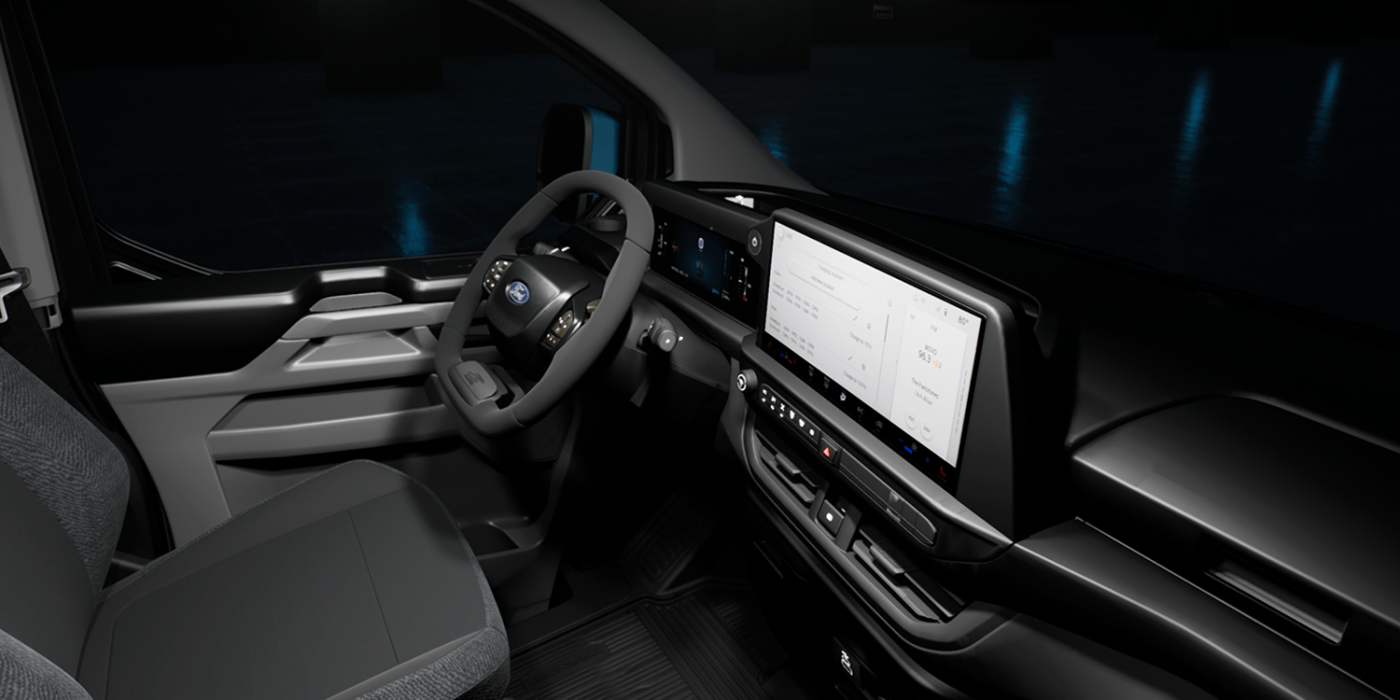
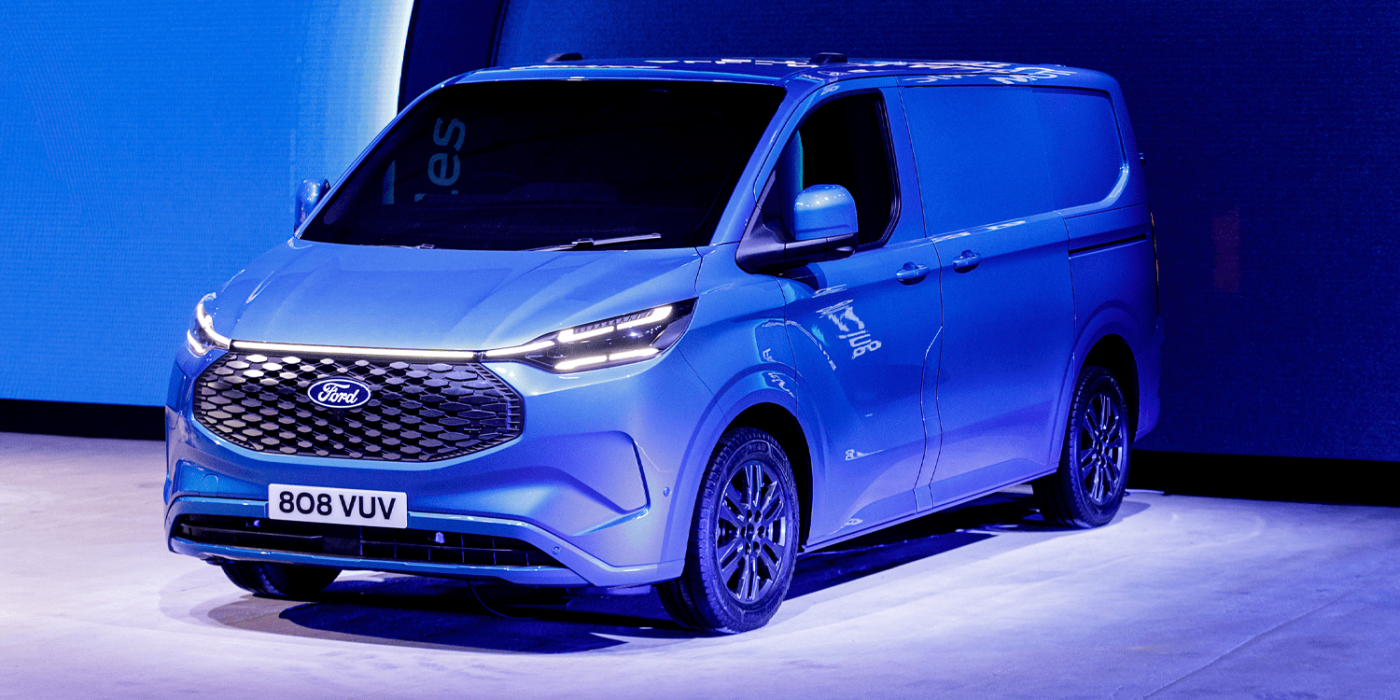
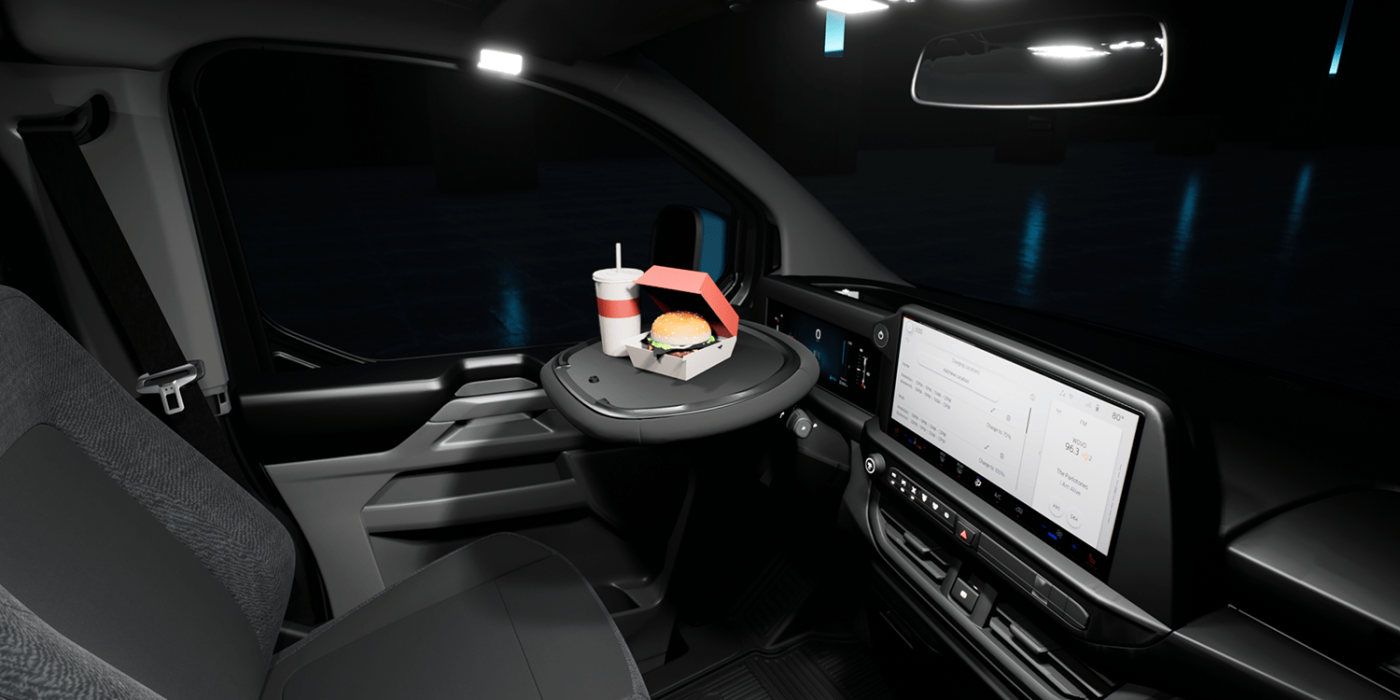
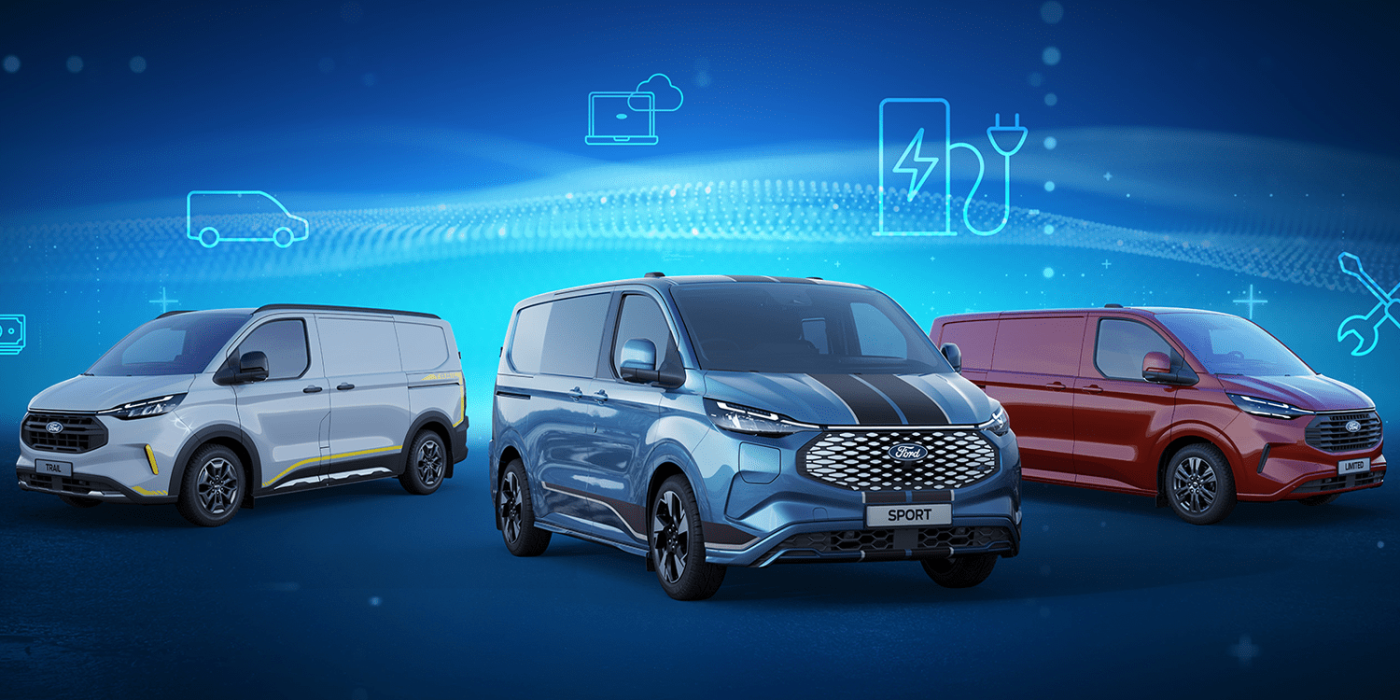
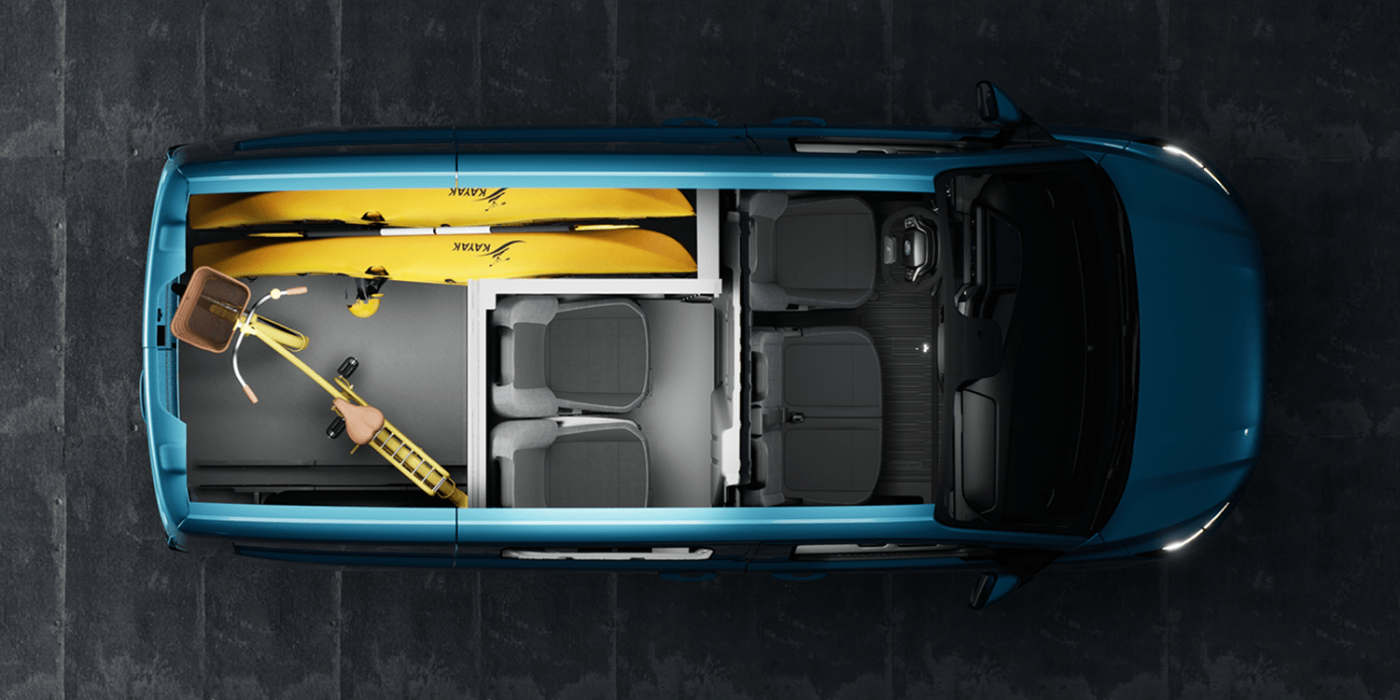
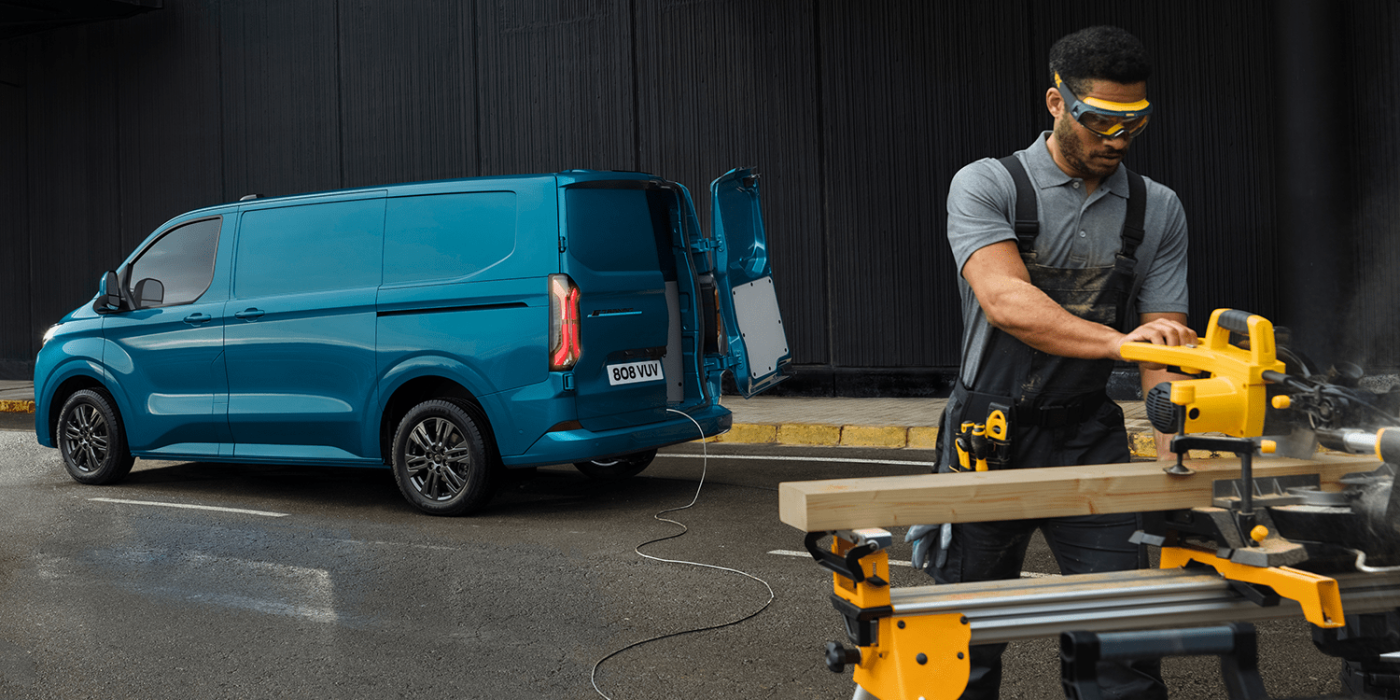
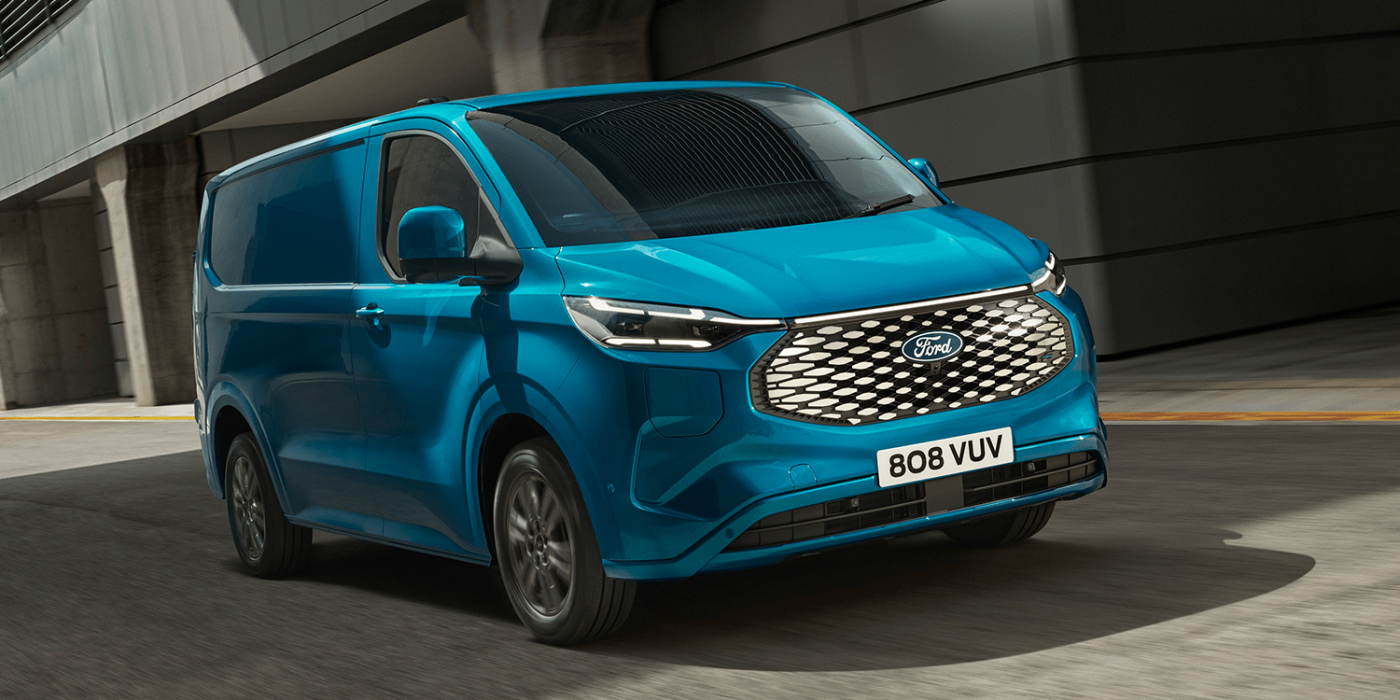
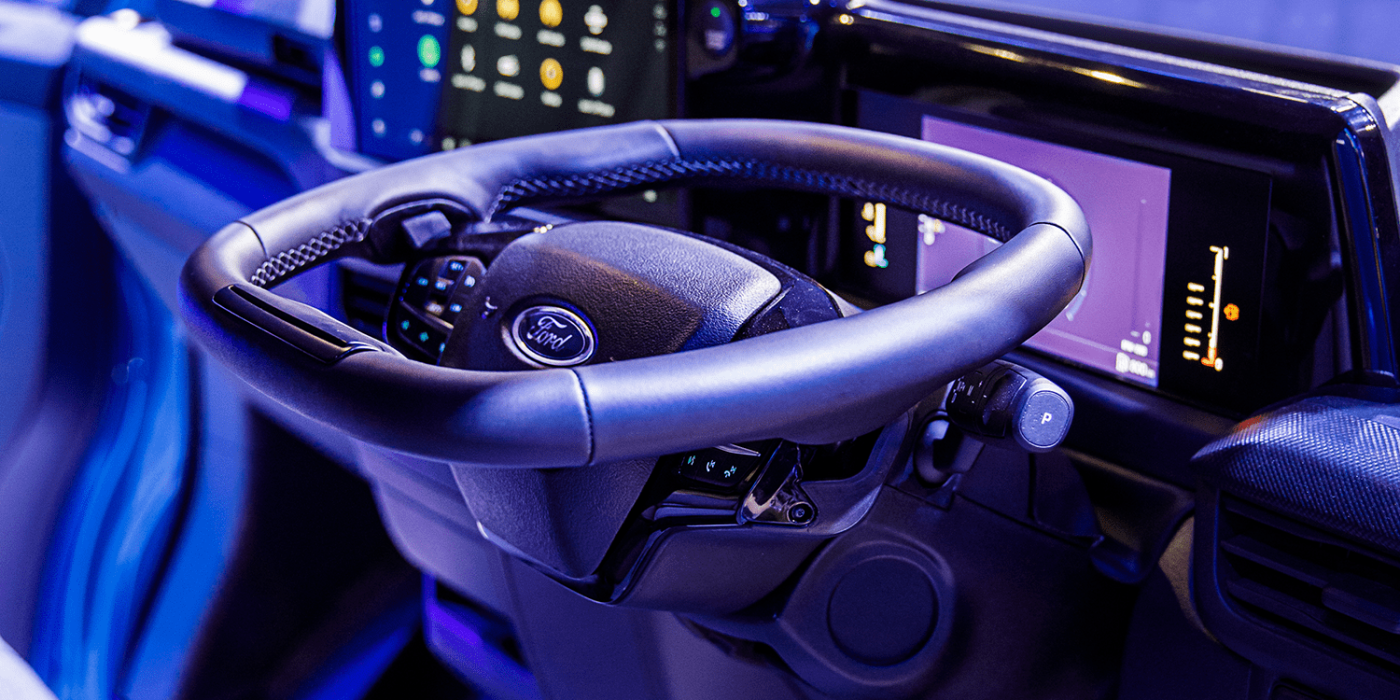
Ford Pro customers can also sign up to the Blue Oval Charging Network, which offers access to over 300,000 charging points across Europe. In addition, Ford gives every E-Transit Custom sold a one-year free subscription for public charging options.
The new E-Transit Custom looks more like a facelift of the current generation – with the usual panel van shape, the designers’ hands are tied in many areas. And yet there have been noticeable changes: In direct comparison with the current Transit Custom generation, the vehicle floor is lower. This is intended to make loading and unloading of the cargo area more accessible and to make it easier for passengers to get in and out of the vehicle.
Ford plans to offer the new electric transporter with single and double cabs and as a station wagon. Depending on the body variant, there will be a choice of two wheelbases and two roof heights. In the panel van version, the new E-Transit Custom offers a load volume of between 5.8 and 9.0 cubic meters and a cargo space length of up to 3.45 meters. The payload is up to 1,100 kilograms, which is “on a par with the still current Custom generation with diesel drive.” But the towing capacity of up to two tons is also worth noting. Among light electric transporters, this value is among the top.
The company also mentions Ford Pro Charging as a new addition to its EV ecosystem: This is split into three areas of ‘Home Charging’, ‘Public Charging’ and ‘Depot Charging” and, in addition to advice from Ford experts, also includes the installation and maintenance of wall boxes, integration with Ford vehicles and “intuitive software solutions”. They are designed to simplify the charging strategy and billing process.
Ford equips the E-Transit Custom with a 13-inch landscape touchscreen. The cockpit of a van often also serves as a mobile office or mobile “canteen,” according to Ford. The group’s design studio ‘D-Ford’ has developed solutions that would consider this everyday practice. One result, for example, is the optional ‘Mobile Office’ package, which includes a tilt adjustment for the steering wheel, which can be transformed into an ergonomic platform for laptops and tablets when the vehicle is parked or used as a small, horizontal table.
Another special feature is the ‘Delivery Assist’ for courier and delivery services designed to automate small, repetitive tasks. At each stop, for example, the hazard warning lights switch on automatically, or the windows and doors close when the driver moves away from the vehicle.
With reporting by Daniel Bönnighausen, Germany.




0 Comments